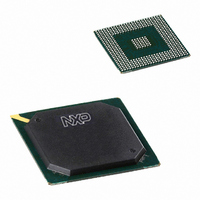PNX1501E,557 NXP Semiconductors, PNX1501E,557 Datasheet - Page 373

PNX1501E,557
Manufacturer Part Number
PNX1501E,557
Description
IC MEDIA PROC 266MHZ 456-BGA
Manufacturer
NXP Semiconductors
Datasheet
1.PNX1502EG557.pdf
(828 pages)
Specifications of PNX1501E,557
Applications
Multimedia
Core Processor
TriMedia
Controller Series
Nexperia
Interface
I²C, 2-Wire Serial
Number Of I /o
61
Voltage - Supply
1.14 V ~ 1.26 V
Operating Temperature
0°C ~ 85°C
Mounting Type
Surface Mount
Package / Case
456-BGA
Lead Free Status / RoHS Status
Lead free / RoHS Compliant
Program Memory Type
-
Ram Size
-
Other names
935274728557
PNX1501E
PNX1501E
PNX1501E
PNX1501E
Available stocks
Company
Part Number
Manufacturer
Quantity
Price
Company:
Part Number:
PNX1501E,557
Manufacturer:
NXP Semiconductors
Quantity:
10 000
- Current page: 373 of 828
- Download datasheet (8Mb)
Philips Semiconductors
Volume 1 of 1
PNX15XX_SER_3
Product data sheet
2.7.1 Supported Output Formats
2.7.2 Layer Selection
2.7.3 Chrominance Downsampling (CDNS)
2.7.4 Gamma Correction and Noise Shaping (GNSH& ONSH)
Besides two instances of the formatter, the output-interface unit also contains two
instances of a chroma-downsampling unit (CDNS), one instance of a gamma-
correction and noise-shaping unit (GNSH) and several input-output muxes; the
gamma-lookup-table allows possible gamma-correction on the final composited
image stream, whereas the noise shaper logic reduces (dithers) the number of bits
per pixel (in the gamma-corrected image) via error propagation. The insertion of VBI
data into the D1 or D1-like output streams is also supported. In order to support 4:2:2
output formats, two chroma-down-sample filters (CDNS) are included at the
beginning of the input-data chain. The input multiplexer (IMUX) is used to
appropriately select the input stream depending on the partitioned layer boundary.
The interleaving unit (INTL) is to be programmed in a pass-through mode.
The output formatter supports the following output formats:
Remark: The PNX15xx Series digital video interface has assigned up to 30 data pins
to the video output interface. Refer to
different pin assignment.
In the Mixers, the final image (to be displayed) is composed (composited) from the
images obtained from the various layers.
Chroma down-sampling is necessary for creating a YUV 4:2:2 output signal. It uses a
(1,2,1)/4 low-pass filter to create co-sited U&V samples (because ITU-R.601
specifies only co-sited sub-sampling). Every second U&V output sample is discarded,
but then the other sample is repeated. Consequently, the output stream is still 4:4:4
and the repeated samples have to be discarded later.
The gamma-lookup-table allows possible gamma-correction on the final composited
image stream, whereas the noise shaper logic reduces (dithers) the number of bits
per pixel (in the gamma-corrected image) via error propagation.
In the GNSH unit, the QVCP-internal data format is converted into the desired output
format. The overshoots and undershoots which are generated by the QVCP layer
units are also removed if noise shaping is off and the desired output is not the 9+1
mode; the data will be left-shifted by one bit and the MSB bit will be lost.
•
•
•
•
30-, 24- or 18-bit parallel YUV or RGB + external H- and V-sync and composite
blank
10- or 8-bit D1 or D1-like 4:2:2 YUV
10- or 8-bit D1-like 4:4:4 YUV/RGB
20- or 16-bit double-interface semi-planar 4:2:2 D1 mode with 10- or 8-bit Y and
10- or 8-bit U/V multiplexed data
Rev. 3 — 17 March 2006
Chapter 3 System On Chip Resources
© Koninklijke Philips Electronics N.V. 2006. All rights reserved.
PNX15xx Series
Chapter 11: QVCP
for the
11-20
Related parts for PNX1501E,557
Image
Part Number
Description
Manufacturer
Datasheet
Request
R
Part Number:
Description:
Manufacturer:
NXP Semiconductors
Datasheet:
Part Number:
Description:
Digital Signal Processors & Controllers (DSP, DSC) MEDIA PROCESSOR PNX15XX/266MHZ
Manufacturer:
NXP Semiconductors
Datasheet:

Part Number:
Description:
IC MEDIA PROC 266MHZ 456-BGA
Manufacturer:
NXP Semiconductors
Datasheet:
Part Number:
Description:
NXP Semiconductors designed the LPC2420/2460 microcontroller around a 16-bit/32-bitARM7TDMI-S CPU core with real-time debug interfaces that include both JTAG andembedded trace
Manufacturer:
NXP Semiconductors
Datasheet:

Part Number:
Description:
NXP Semiconductors designed the LPC2458 microcontroller around a 16-bit/32-bitARM7TDMI-S CPU core with real-time debug interfaces that include both JTAG andembedded trace
Manufacturer:
NXP Semiconductors
Datasheet:
Part Number:
Description:
NXP Semiconductors designed the LPC2468 microcontroller around a 16-bit/32-bitARM7TDMI-S CPU core with real-time debug interfaces that include both JTAG andembedded trace
Manufacturer:
NXP Semiconductors
Datasheet:
Part Number:
Description:
NXP Semiconductors designed the LPC2470 microcontroller, powered by theARM7TDMI-S core, to be a highly integrated microcontroller for a wide range ofapplications that require advanced communications and high quality graphic displays
Manufacturer:
NXP Semiconductors
Datasheet:
Part Number:
Description:
NXP Semiconductors designed the LPC2478 microcontroller, powered by theARM7TDMI-S core, to be a highly integrated microcontroller for a wide range ofapplications that require advanced communications and high quality graphic displays
Manufacturer:
NXP Semiconductors
Datasheet:
Part Number:
Description:
The Philips Semiconductors XA (eXtended Architecture) family of 16-bit single-chip microcontrollers is powerful enough to easily handle the requirements of high performance embedded applications, yet inexpensive enough to compete in the market for hi
Manufacturer:
NXP Semiconductors
Datasheet:

Part Number:
Description:
The Philips Semiconductors XA (eXtended Architecture) family of 16-bit single-chip microcontrollers is powerful enough to easily handle the requirements of high performance embedded applications, yet inexpensive enough to compete in the market for hi
Manufacturer:
NXP Semiconductors
Datasheet:
Part Number:
Description:
The XA-S3 device is a member of Philips Semiconductors? XA(eXtended Architecture) family of high performance 16-bitsingle-chip microcontrollers
Manufacturer:
NXP Semiconductors
Datasheet:

Part Number:
Description:
The NXP BlueStreak LH75401/LH75411 family consists of two low-cost 16/32-bit System-on-Chip (SoC) devices
Manufacturer:
NXP Semiconductors
Datasheet:

Part Number:
Description:
The NXP LPC3130/3131 combine an 180 MHz ARM926EJ-S CPU core, high-speed USB2
Manufacturer:
NXP Semiconductors
Datasheet:

Part Number:
Description:
The NXP LPC3141 combine a 270 MHz ARM926EJ-S CPU core, High-speed USB 2
Manufacturer:
NXP Semiconductors

Part Number:
Description:
The NXP LPC3143 combine a 270 MHz ARM926EJ-S CPU core, High-speed USB 2
Manufacturer:
NXP Semiconductors











